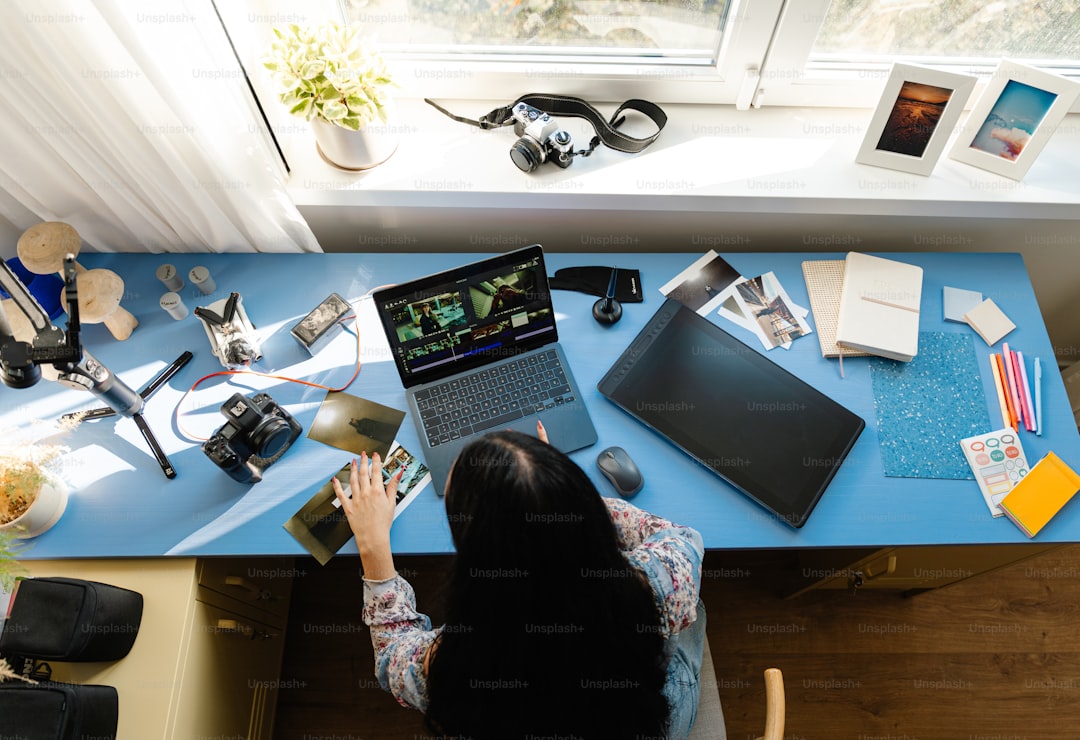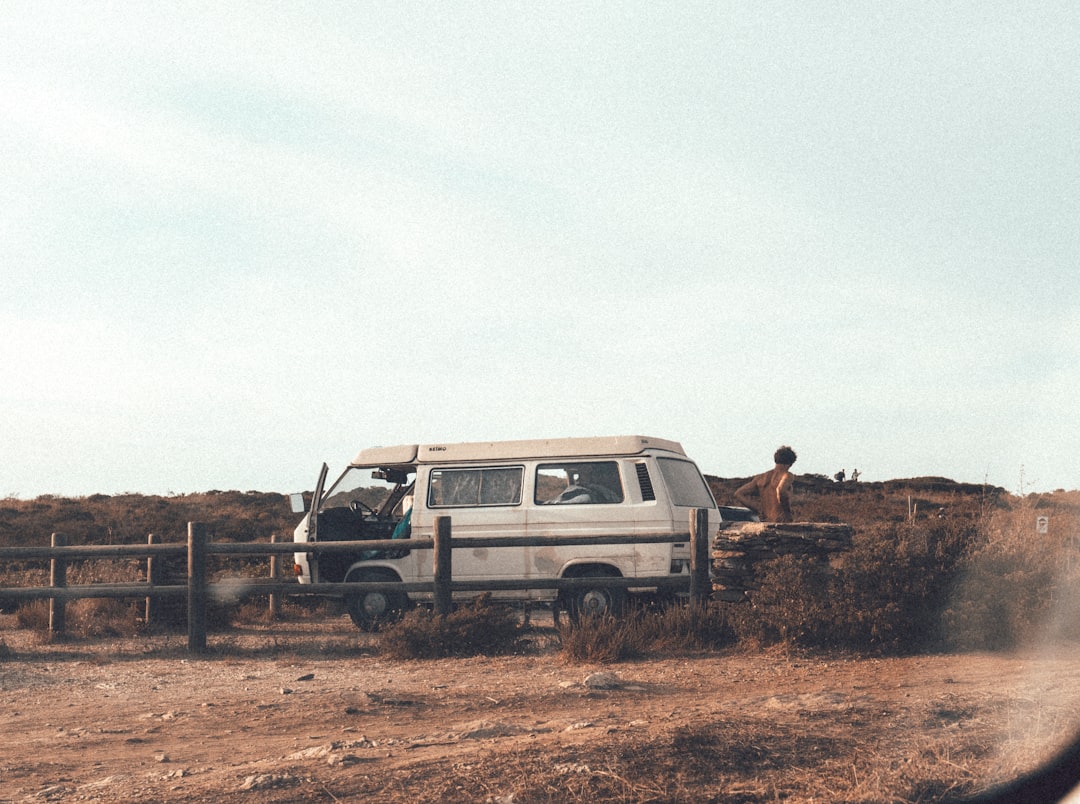Ultimate Guide to Digital Nomad Hotspots and Essential Travel Gear

Introduction
The digital nomad lifestyle blends work, travel and adventure into a single, fluid experience. With high‑speed internet available in more places than ever, professionals can earn a living from anywhere while exploring new cultures, cuisines and landscapes. Yet the freedom of the road comes with its own set of challenges. Choosing the right destination, staying productive on the move, and packing the gear that keeps you connected and comfortable are all critical to success.
This guide brings together the most sought‑after nomad hotspots around the world and a comprehensive list of essential travel gear. Whether you are a seasoned remote worker looking for your next base or a newcomer planning the first leg of your journey, you will find actionable advice, practical checklists and insider tips to help you thrive.
How to Pick a Nomad Destination
Before diving into specific locations, it helps to understand the criteria that make a place nomad‑friendly.
- Internet reliability – A stable, fast connection is non‑negotiable. Look for fiber optic coverage, 4G/5G networks and co‑working spaces that advertise high‑speed Wi‑Fi.
- Cost of living – Your budget will dictate how long you can stay. Compare rent, food, transportation and entertainment costs against your expected earnings.
- Community – A vibrant expat or nomad community provides networking opportunities, social events and a safety net of shared knowledge.
- Visa flexibility – Many countries now offer digital nomad visas or long‑term tourist visas that simplify legal stays of three months or more.
- Quality of life – Climate, safety, healthcare, and access to outdoor activities all influence day‑to‑day happiness.
When a city scores well across these dimensions, it becomes a strong candidate for a digital nomad base.
Top Digital Nomad Hotspots
Below is a curated list of cities that consistently rank high for remote workers. Each entry includes a brief overview, key attractions, internet quality, typical costs and community highlights.
Bali – Ubud, Indonesia
Ubud sits in the heart of Bali’s cultural valley, surrounded by rice terraces and jungle pathways. The town has become a magnet for creatives and tech freelancers.
- Internet – Most cafés and co‑working spaces provide 30‑50 Mbps fiber connections. Mobile 5G is expanding but can be spotty in remote areas.
- Cost of living – A comfortable lifestyle can be maintained on $1,200‑$1,800 per month, covering a modest studio, meals at local warungs and occasional yoga classes.
- Community – Weekly meet‑ups, surf retreats and digital nomad conferences create a strong support network.
- Lifestyle – Morning meditation, afternoon hikes to waterfalls and evening sunset dinners on the beach make work‑life balance feel natural.
Medellín – Colombia
Medellín’s transformation from a troubled past to a modern, innovative city has been remarkable. The “City of Eternal Spring” offers pleasant weather year‑round.
- Internet – Fiber optic plans reach 100 Mbps in most neighborhoods. Co‑working hubs such as Selina and Atom House provide reliable Wi‑Fi and private booths.
- Cost of living – A single digital nomad can live well on $1,300‑$1,700 per month, covering a one‑bedroom apartment in El Poblado, groceries and public transport.
- Community – English‑speaking meet‑ups, tech hackathons and a growing number of coworking events foster collaboration.
- Lifestyle – Cable car rides to hilltop parks, vibrant street art tours and salsa dancing nights keep the social calendar full.
Lisbon – Portugal
Lisbon blends historic charm with a thriving startup scene. The city’s “Tech to the People” initiative makes it attractive for remote professionals.
- Internet – Nationwide fiber coverage offers 1 Gbps speeds; most cafés and coworking spaces have at least 100 Mbps.
- Cost of living – Expect $1,800‑$2,500 per month for a centrally located apartment, groceries, and occasional outings.
- Community – Large expat groups, English‑language meet‑ups and numerous coworking spaces like Heden and Second Home create a bustling ecosystem.
- Lifestyle – Tram rides through Alfama, sunset views from Miradouro da Senhora do Monte and weekend trips to Sintra add cultural depth.
Chiang Mai – Thailand
Chiang Mai’s relaxed pace, low cost and mountain backdrop have made it a long‑standing favorite for remote workers.
- Internet – Many cafés provide 50‑100 Mbps fiber connections; mobile 4G is ubiquitous.
- Cost of living – A comfortable month can be budgeted at $900‑$1,300, covering a furnished loft, street food and occasional gym membership.
- Community – Regular “Nomad Fridays,” language exchange evenings and a network of digital nomad Facebook groups keep the social scene active.
- Lifestyle – Temples, night markets, cooking classes and easy access to trekking in the surrounding hills create a balanced routine.
Tbilisi – Georgia
Georgia’s open‑border policy and generous visa‑free stay for many nationalities make Tbilisi an emerging hotspot.
- Internet – Fiber optic plans of 100 Mbps are widely available; coworking spaces such as Impact Hub provide stable connections.
- Cost of living – $1,200‑$1,600 per month can cover a modern apartment in the Old Town, dining at local tavernas and occasional day trips.
- Community – A growing number of tech meet‑ups, English‑speaking social clubs and the “Georgian Nomad” Facebook group provide networking opportunities.
- Lifestyle – Wine tasting tours, historic sulfur baths and proximity to the Caucasus mountains offer diverse leisure options.
Barcelona – Spain
Barcelona’s Mediterranean vibe, strong startup culture and world‑class infrastructure attract a broad spectrum of remote professionals.
- Internet – Citywide fiber networks deliver up to 1 Gbps; coworking spaces like WeWork and Cloudworks guarantee high‑speed Wi‑Fi.
- Cost of living – A realistic budget ranges from $2,200‑$3,000 per month for a central apartment, groceries and cultural outings.
- Community – International meet‑ups, tech conferences and a dense network of coworking spaces nurture collaboration.
- Lifestyle – Beach runs, Gaudí architecture tours and tapas evenings make the city an inspiring backdrop for work.
Austin – Texas, USA
Austin’s reputation as “Silicon Hills” extends to remote workers seeking a vibrant music scene and entrepreneurial spirit.
- Internet – Broadband providers deliver 300 Mbps to 1 Gbps; numerous coworking hubs such as Capital Factory provide reliable connections.
- Cost of living – Expect $2,500‑$3,500 per month for a downtown loft, groceries and entertainment.
- Community – Meet‑ups range from tech talks to outdoor yoga, and the city’s “Live Music Capital” vibe fuels creative energy.
- Lifestyle – Lady Bird Lake paddleboarding, food‑truck festivals and easy access to Hill Country wineries add variety.
Cape Town – South Africa
Cape Town’s dramatic coastline, multicultural atmosphere and growing tech scene make it a compelling choice for adventurous nomads.
- Internet – Fiber plans of 100‑300 Mbps are common; many cafés and coworking spaces maintain stable Wi‑Fi.
- Cost of living – $1,600‑$2,300 per month can secure a beachfront apartment, fresh produce and weekend trips to the winelands.
- Community → A mix of expat groups, tech meet‑ups and outdoor adventure clubs create a dynamic environment.
- Lifestyle – Table Mountain hikes, surfing at Muizenberg and cultural tours of Bo-Kaap keep the experience lively.
Budapest – Hungary
Budapest blends historic grandeur with an emerging digital economy, offering a strategic location in Central Europe.
- Internet – Nationwide fiber delivers up to 1 Gbps; coworking spaces such as Kaptár provide fast, reliable Wi‑Fi.
- Cost of living – $1,400‑$1,900 per month covers a well‑located flat, public transport passes and a vibrant nightlife.
- Community – English‑language meet‑ups, startup incubators and a lively expat scene foster collaboration.
- Lifestyle – Thermal baths, Danube river cruises and day trips to the wine region of Eger enrich downtime.
Buenos Buenos – Argentina
The capital city of Argentina offers a blend of European architecture, tango culture and affordable living.
- Internet – Fiber plans of 100‑200 Mbps are widely available; coworking spaces such as La Maquinita provide reliable connections.
- Cost of living – $1,200‑$1,800 per month can cover a modern apartment in Palermo, fresh market groceries and occasional weekend getaways.
- Community – A strong network of digital nomad meet‑ups, language exchange events and tech meet‑ups keep the social circuit active.
- Lifestyle – Evening milongas, museum tours and nearby trips to the Pampas create a balanced routine.
These destinations represent a spectrum of climates, cultures and cost structures. The right choice depends on personal preferences, visa requirements and the type of environment that fuels your productivity.
Essential Travel Gear for Digital Nomads
Packing light while staying fully equipped is a delicate balance. The following categories cover the gear that maximizes efficiency, comfort and safety on the road.
Core Tech Essentials
| Item | Why It Matters | Recommended Options |
|---|---|---|
| Laptop | Primary work device; needs performance and durability | MacBook Air M2, Dell XPS 13, Lenovo ThinkPad X1 Carbon |
| Portable Monitor | Expands screen real estate for multitasking | ASUS ZenScreen, Lenovo ThinkVision |
| Noise‑Cancelling Headphones | Blocks ambient noise in cafés, co‑working spaces | Sony WH‑1000XM4, Bose QuietComfort 45 |
| Universal Power Adapter | Compatibility with global plug types | EPICKA Travel Adapter with USB‑C Power Delivery |
| External SSD (1‑2 TB) | Fast backup, extra storage for large files | Samsung T7, SanDisk Extreme Portable SSD |
| Mobile Hotspot / SIM Card | Redundant internet connection when Wi‑Fi fails | Skyroam Solis, local 4G/5G SIMs |
| USB‑C Hub with Power Delivery | Connect multiple peripherals while charging | Anker PowerExpand 8‑in‑1 |
| Portable Bluetooth Keyboard | Ergonomic typing on tablets or phones | Logitech K380, iClever Bluetooth Keyboard |
| Webcam Cover | Privacy protection for built‑in laptop cameras | Simple fabric flaps or adhesive covers |
| Surge Protector / Power Strip | Protect devices from voltage spikes | Belkin Surge Protector with USB ports |
Health, Comfort and Mobility
| Item | Purpose | Suggested Models |
|---|---|---|
| Travel Backpack (30‑45 L) | Carry tech, clothes and accessories comfortably | Nomatic Travel Pack, Peak Design Travel Backpack |
| Packing Cubes | Organize clothing and keep luggage tidy | Eagle Creek Packing Cubes, Amazon Basics |
| Lightweight Travel Towel | Quick‑dry for hostels or gyms | PackTowl Personal, Rainleaf Microfiber |
| Reusable Water Bottle | Stay hydrated, reduce plastic waste | Hydro Flask 21 oz, Nalgene Wide Mouth |
| Portable Luggage Scale | Avoid overweight baggage fees | Etekcity Digital Luggage Scale |
| Compact First‑Aid Kit | Basic medical supplies for minor injuries | Adventure Medical Kits Ultralight/Daytrip |
| Travel Pillow | Comfort on long flights or bus rides | Trtl Pillow, Cabeau Evolution |
| Eye Mask & Earplugs | Improve sleep quality in unfamiliar environments | Alaska Bear Sleep Mask, Mack’s Earplugs |
| Packable Rain Jacket | Weather protection without bulk | Patagonia Houdini, Columbia Packable |
| Multi‑Tool | Handy for minor repairs or campsite tasks | Leatherman Wave, Victorinox SwissTool |
Security and Documentation
| Item | Reason | Example |
|---|---|---|
| RFID‑Blocking Passport Holder | Prevent electronic theft of personal data | Travelambo RFID Wallet |
| Portable Safe / Cable Lock | Secure valuables in hostels or shared apartments | Master Lock Portable Safe |
| Travel Insurance Policy | Coverage for medical emergencies, lost gear, trip cancellations | World Nomads, SafetyWing |
| Backup Cloud Storage | Redundant backup of important files | Backblaze B2, Google Drive (Premium) |
| Offline Map App (e.g., MAPS.ME) | Navigation without data connection | MAPS.ME |
| VPN Subscription | Secure internet connection on public Wi‑Fi | NordVPN, ExpressVPN |
Lifestyle and Productivity Add‑Ons
| Item | Benefit | Popular Choice |
|---|---|---|
| Portable Espresso Maker | Coffee on the go, reduces café expenses | Wacaco Minipresso GR |
| Compact DSLR or Mirrorless Camera | High‑quality content creation for blogs or social media | Sony Alpha a6400, Canon EOS M50 |
| Notebook & Pen | Analog brainstorming, quick note‑taking | Moleskine Classic, Leuchtturm1917 |
| Light Therapy Lamp | Combat seasonal affective disorder in darker climates | Verilux HappyLight |
| Fitness Tracker | Monitor activity levels and encourage movement | Fitbit Charge 5, Garmin Vivosmart |
| Language Learning App Subscription | Facilitate communication in new locales | Duolingo Plus, Babbel |
| Portable Yoga Mat | Maintain flexibility and stress relief | Manduka eKO SuperLite |
| Travel-sized Desk Lamp | Better lighting for late‑night work in dim rooms | LuminoLite Rechargeable LED Lamp |
Packing Checklist Overview
- Technology – Laptop, charger, external SSD, headphones, adapters, hub, hotspot, mouse, cables.
- Documentation – Passport, visas, travel insurance, vaccination records, digital backups.
- Clothing – Versatile layers, quick‑dry shirts, comfortable pants, underwear, swimwear, rain jacket.
- Health – First‑aid kit, prescription meds, vitamins, reusable mask, hand sanitizer.
- Accessories – Backpack, packing cubes, water bottle, travel pillow, eye mask, earplugs.
- Security – RFID wallet, cable lock, portable safe, VPN subscription.
- Lifestyle – Notebook, pen, portable coffee maker, fitness tracker, yoga mat.
Tailor the list to the climate and duration of each trip, but keep the core items consistent to avoid forgetting essential gear.
Packing Strategies for Different Travel Styles
Minimalist Backpacker
- Aim for a 30 L pack.
- Choose ultra‑light clothing (merino wool tops, synthetic pants).
- Use a single external SSD instead of multiple drives.
- Rely on cloud storage for most files, keeping only essential backups offline.
Mid‑Range Comfort Traveler
- Opt for a 40‑45 L backpack with a dedicated laptop compartment.
- Include a lightweight rain jacket, a compact travel pillow, and a portable monitor.
- Carry a small set of spare chargers and a universal adapter with USB‑C PD.
Long‑Term Nomad (6+ months)
- Consider a larger wheeled suitcase for clothing variety and a daypack for daily use.
- Invest in a high‑capacity external SSD (2 TB) and a rugged protective case.
- Pack a spare laptop or a tablet as a backup device.
- Include a portable power bank (30 000 mAh) and a solar charger for remote locations.
Staying Productive on the Road
Create a Routine
- Morning ritual – Light exercise, a healthy breakfast and a brief review of the day’s priorities.
- Dedicated work blocks – Use the Pomodoro technique (25‑minute focus intervals) to maintain momentum.
- Scheduled breaks – Step outside, stretch, or explore the neighborhood to reset mental energy.
Choose the Right Workspace
- Cafés with power outlets – Ideal for short bursts of work; test Wi‑Fi speed before settling in.
- Co‑working spaces – Offer reliable internet, private booths, networking events and a professional atmosphere.
- Public libraries – Quiet environments with free Wi‑Fi, often equipped with study rooms that can be booked.
Manage Time Zones
- Use a world clock app to track the overlap between your location and clients or teammates.
- Schedule “core hours” that align with the majority of collaborators, and communicate availability clearly.
Secure Your Data
- Enable two‑factor authentication on all work accounts.
- Store sensitive files on an encrypted external SSD and on a reputable cloud service.
- Regularly update software and operating systems to protect against vulnerabilities.
Avoid Burnout
- Set clear boundaries between work and leisure; turn off notifications after work hours.
- Use a “digital sunset” – no screens at least an hour before bedtime to improve sleep quality.
- Take at least one full day off per week to explore, rest or pursue hobbies.
Budgeting for a Nomadic Lifestyle
Fixed vs Variable Expenses
| Fixed Costs | Variable Costs |
|---|---|
| Accommodation (monthly rent or Airbnb) | Food (restaurants vs groceries) |
| Internet subscription or coworking membership | Transportation (local rides, flights) |
| Insurance premiums | Entertainment and tours |
| Health and wellness subscriptions | Miscellaneous souvenirs |
Tracking Tools
- Expense apps – Mint, YNAB, or TravelSpend help categorize and monitor spending in real time.
- Currency converters – Use an app with offline rates to avoid conversion fees at the airport.
- Banking – Choose a bank with no foreign transaction fees and a debit card that offers free ATM withdrawals worldwide.
Saving Strategies
- Long‑term rentals – Negotiate monthly rates for apartments rather than daily Airbnb fees.
- Cook at home – Purchase fresh produce at local markets and prepare simple meals.
- Public transport passes – Many cities offer discounted monthly cards for buses and metros.
- Coworking membership swaps – Trade days at coworking spaces with fellow nomads to reduce costs.
Connectivity Hacks
- Local SIM cards – Purchase a data plan upon arrival; many countries have prepaid options that start at $10‑$20 for 10 GB.
- eSIM technology – Enables multiple data plans on a single device without swapping physical cards.
- Wi‑Fi finder apps – Instabridge or Wi‑Fi Map locate free hotspots in cafés, hotels and public areas.
- Portable router – A compact 4G router can share a cellular connection with multiple devices, ideal for apartments with limited outlets.
Building Community While on the Move
- Meet‑up platforms – Use Meetup.com, Nomad List events and Facebook groups to find local gatherings.
- Co‑working events – Many spaces host happy hours, skill‑share sessions and workshops that facilitate networking.
- Language exchange – Tandem or HelloTalk connect you with locals eager to practice English while you learn their language.
- Volunteer opportunities – Short‑term projects (e.g., beach clean‑ups, teaching workshops) provide purpose and social interaction.
Health and Safety Considerations
- Vaccinations – Check the CDC or WHO recommendations for each destination; keep a digital copy of vaccination records.
- Travel health kit – Include basic antibiotics, antidiarrheal medication, antihistamines and a digital thermometer.
- Local emergency numbers – Save the country’s emergency services number in your phone contacts.
- Personal safety – Use a money belt or hidden pouch for passports and cash; stay aware of surroundings, especially at night.
Environmental Impact and Sustainable Travel
- Choose eco‑friendly accommodations – Look for hotels or hostels with green certifications.
- Minimize single‑use plastics – Carry reusable utensils, coffee cups and shopping bags.
- Offset carbon emissions – Invest in reputable offset programs to balance flights and long‑distance travel.
- Support local economies – Eat at family‑run restaurants, purchase handmade crafts and use local guides.
Final Thoughts
The digital nomad lifestyle offers unparalleled freedom, but thriving in this mode requires thoughtful planning. Selecting a hotspot that aligns with your internet needs, budget, and personal preferences sets the foundation for success. Equipping yourself with reliable, lightweight gear ensures you stay productive, healthy and secure wherever you land. By establishing routines, managing finances, and nurturing community connections, you can turn the world into an extended office without sacrificing quality of life.
Remember that the journey is as important as the destination. Embrace the cultural richness, the spontaneous adventures and the moments of quiet reflection that each new city provides. With the right tools and mindset, the world truly becomes your workspace. Safe travels and happy nomading!
Random Posts

Balancing Focus And Flexibility In A Borderless Work Environment
Learn how to keep deep focus while staying flexible in a borderless workplace - strategies, mindset, and tools that let teams across time zones deliver results without burnout
1 month ago

Your Complete Handbook to Living and Working in Spain as a Nomad
Learn how to live and work in Spain as a digital nomad, covering visa steps, affordable cities, fast internet, coworking spaces and cultural tips for a smooth sun filled adventure.
1 month ago

Building a Supportive Nomad Community for Better Wellbeing
A strong nomad community turns solo travel into shared wellbeing, giving you reliable health tips, mental resilience support and lasting connections wherever you roam.
1 month ago

Road Ready Mindset Building Community and Health for Nomads
Discover a road ready mindset that keeps digital nomads healthy, productive, and connected. Learn practical habits, mental health tricks, and community building tips you can use anywhere from Bangkok cafés to Portuguese co living villages.
2 months ago

Smart Money Management Tips for Remote Workers
Master remote finances with flexible budgeting, unified income tracking, cross-border banking, tax strategies, savings and insurance, essential tips to keep your money secure while you work from anywhere
1 month ago
Latest Posts

Essential Software Every Remote Professional Should Use
Master remote work with essential tools: instant messaging like Slack, high definition video calls such as Zoom, and asynchronous voice apps. Streamline communication, stay connected and boost productivity.
1 day ago

Mastering Remote Work Productivity for Digital Nomads and Freelancers
Learn proven habits, tools, and tactics that help digital nomads and freelancers stay focused, deliver quality work, and maintain a sustainable lifestyle while traveling the world.
1 day ago

Tech‑Friendly European Towns Perfect for Remote Living
Discover Europe’s best small towns where fast internet, affordable living and vibrant tech communities let you work remotely while soaking up historic charm, lakeside views or mountain air.
1 day ago